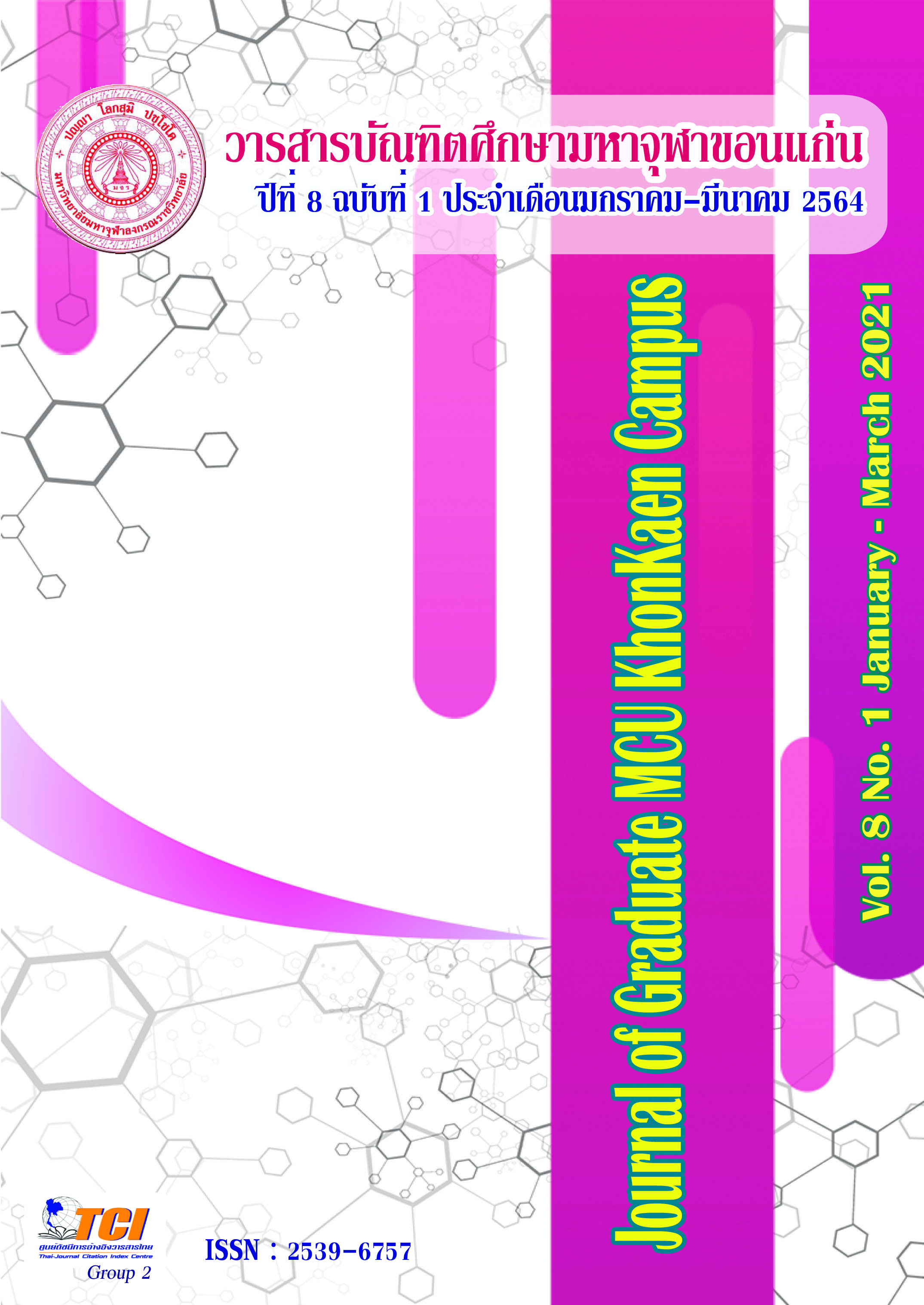A SPREADING OF YE DHAMMA STANZA FROM JAMBUDIPA TO SUVANNABHUMI
Main Article Content
Abstract
Buddhism was founded by Shakyamuni Buddha in 2600 years ago, he came from Shakya clan, when he was 29 years old, he left the palace from Kapilvastu and decided to renounce the world and search for the way of enlightenment, finally he got it under the Bodhi tree in the full moon day of Visakha month when he was 35 years old, and taught his sermon to 5 disciples at Isipatana deer park near Varanasi, finally he got 60 disciples for first retreat lent.
After the first Buddhist lent, the Buddha himself has sent 60 disciples for spreading Buddhism in all directions for the benefit of people and human peace, among them, venerable Assaji (Asvajit in Sanskrit) came to Rajagaha (Rajagriha in Sanskrit) and taught to Upatissa in a short stanza (Sloka) that “Ye Dhamma Hetu Pabhava Tesam Tetum Tathagato Tesanca Yo Nirodho Ca Evam Vadi Mahasamano”. After that, Buddhism spread throughout Jambudipa (Jambudvipa in Sanskrit) or India and Suvannabhumi (Suvarnabhumi in Sanskrit) or Southeast Asia and become the most popular stanza in Buddhism.
Article Details
References
มหาจุฬาลงกรณราชวิทยาลัย. (2539). พระไตรปิฎกภาษาไทย ฉบับมหาจุฬาลงกรณราชวิทยาลัย.
มหาวิทยาลัยมหาจุฬาลงกรณราชวิทยาลัย. (2539). พระไตรปิฎกภาษาไทย ฉบับมหาจุฬาลงกรณ ราชวิทยาลัย. กรุงเทพมหานคร: โรงพิมพ์มหาจุฬาลงกรณราชวิทยาลัย.
ทองสืบ ศุภมาร์ก (แปล). (2512). พระพุทธศาสนาในกัมพูชา. กรุงเทพมหานคร: โรงพิมพ์คุรุสภา
ลาดพร้าว.
ศักดิ์ชัย สายสิงห์. (2561). ศิลปะทวาราวดี วัฒนธรรมทางศาสนายุคแรกเริ่มในดินแดนไทย.
กรุงเทพมหานคร: ด่านสุทธาการพิมพ์.
ศักดิ์ชัย สายสิงห์. (2557). ศิลปะพม่า. กรุงเทพมหานคร: โรงพิมพ์มติชนปากเกร็ด.
สุเทพ พรหมเลิศ. (2553). มหาวงศ์ ภาค 1. กรุงเทพมหานคร: โรงพิมพ์มหาจุฬาลงกรณ
ราชวิทยาลัย.
A.C.L.Carlleyle. (2018). Report of a tour in the Gorakhpur district in 1875-76 and
-77 Vol.18. London: Trademark of FB & Ltd.
Alexander Cunningham. (1892). Mahabodhi or The Great Buddhist Temple under
Bodhi Tree at Buddhagaya. London: W.H. Allen & Co., Limited
Alexander Cunningham. (1854). The Bhilsa Topes. London: Smith Elder & Co.,
Alexander Cunningham. (1966). Report of tour in Bundelkhand and Malwa.
Varanasi: Skylark Printers.
Alexander Cunningham. (2000). Report of tour in Gangetic Provinces from Badaon
to Biahar. New Delhi: Veerendra Printers.
Aruna Tripathi. (2003). The Buddhist Art of Kaushambi. New Delhi: D.K. Printworld Ltd.
Archeological Survey of India. (2002). Annual Report 1907-1908. New Delhi: S Narayan
& Son.
Archeological Survey of India. (2002). Annual Report 1907-1908. New Delhi: S
Narayan & Son.
B.S. Verma. (2011). Antichak Excavations-2 (1971-1981). New Delhi: Chandu Press.
Charles Allen. (2002). The Buddha and the Sahib. London: John Murray.
Claudine Bautze Picron. (2015). The Forgotten Place, stone images from Kurkihar,
Bihar. Noida: Angkor Publishers.
Daya Ram Sahni. (1972). Catalogue of the museum of archeology ae Sarnath. New
Delhi: New Era Offsett.
Donald M. Stadtner. (2011). Sacred Sites of Burma. Bangkok: Siriwattana Interprint
Public Co, Ltd.
Elizbeth Howard Moore. (2012). The Pyu Landscape: Collected Articles. Rangoon: MCK
Printing.
James Burgess. (1883). Report on the Ellura Cave Temples and The Brahmanical and
Jaina caves in Western India. London: Trubner & Co., Ludgate Hill.
James Fergusson and James Burgess. (2000). The Cave Temples of India. New Delhi:
Munshiram Manoharlal Publishers Pvt., Ltd.
P.K. Trivedi. (2012). Further Excavations at Udayagiri-2, Odisha (2001-03). New Delhi:
Chandu Press.

